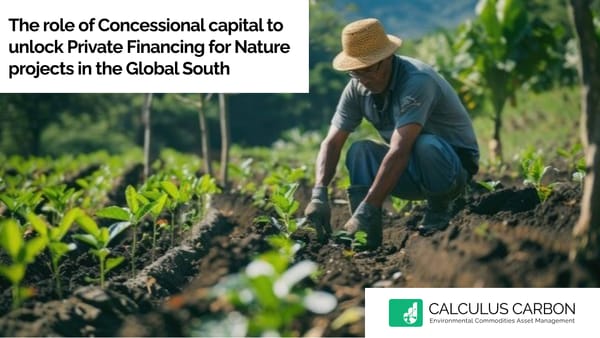Sowing the Seeds of Change: The Promise of Regenerative Agriculture
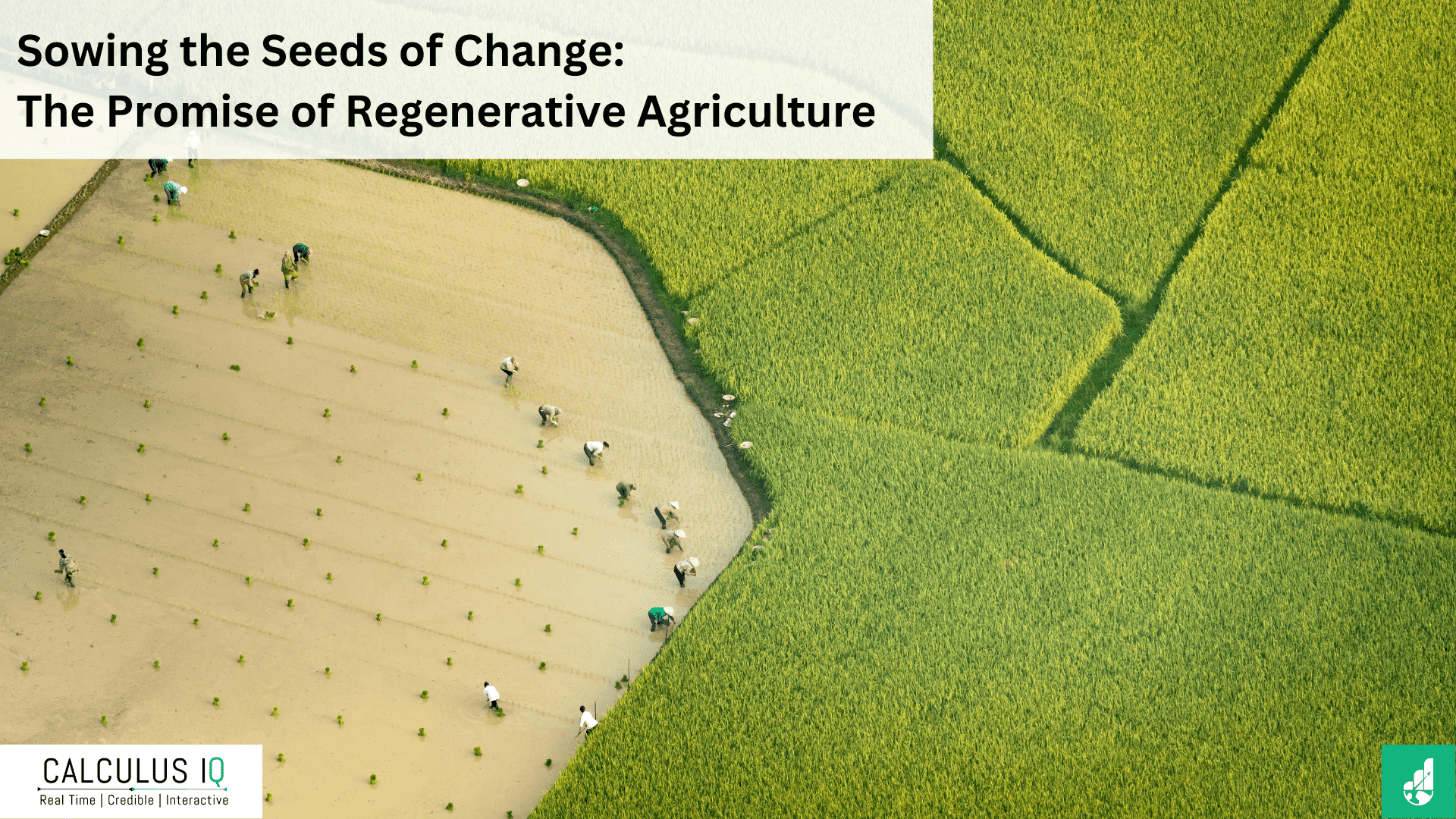
Introduction
Regenerative agriculture stands as a beacon of hope in the global fight against climate change, offering a multifaceted solution that extends beyond mitigating greenhouse gas emissions to safeguarding food security for future generations. This approach revitalizes soil health, fosters biodiversity, and sequesters carbon, presenting a holistic alternative to conventional farming practices. Through regenerative practices, farmers not only mitigate the negative impacts of agriculture on the environment but also enhance the resilience of food systems.
As the world grapples with the challenges posed by climate change, regenerative agriculture emerges as a promising strategy to address both environmental and food security concerns, paving the way for a more sustainable and resilient future.
Understanding Regenerative Agriculture
Since the dawn of agriculture, approximately 133 gigatonnes of carbon have been depleted from soils globally, equivalent to emitting 480 GtCO2. The bulk of this depletion has occurred since the 19th century, spurred by activities like deforestation, overgrazing, prairie plowing, and wetland drainage to expand croplands. Degrading practices such as intensive tillage, monoculture farming, fallowing, and heavy dependence on chemical inputs have further exacerbated soil health. These agricultural methods disrupt the delicate balance of microorganisms crucial for maintaining fertile, carbon-rich soils.
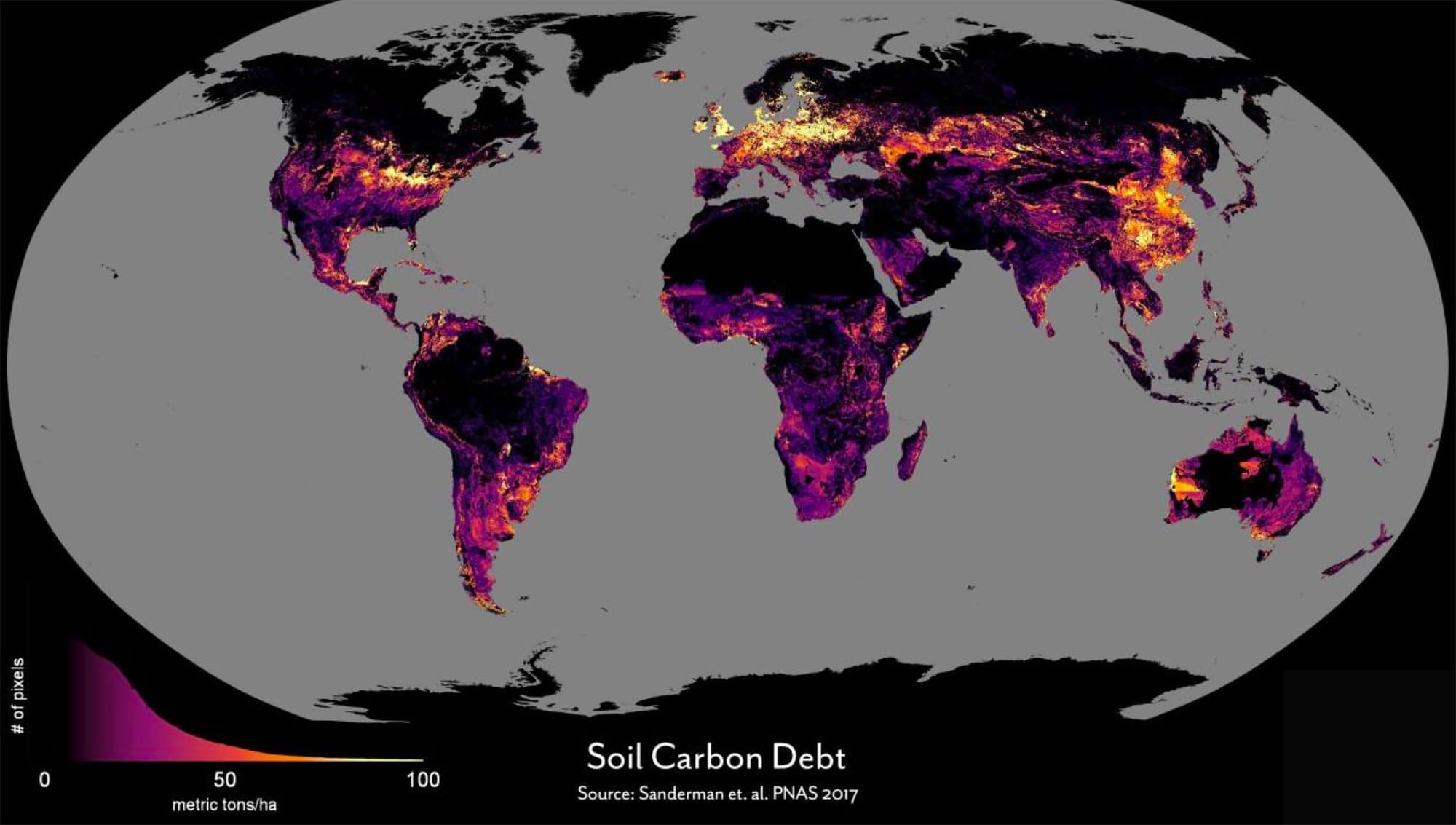
Image 1: Soil Carbon debt: Human appropriation of land for agriculture has greatly altered the terrestrial carbon balance, creating. a large but uncertain carbon debt in soils
Regenerative agriculture is a comprehensive approach to farming that goes beyond traditional methods, focusing on restoring ecosystems and enhancing agricultural sustainability. At its core, regenerative agriculture aims to improve soil health, foster biodiversity, and promote ecological balance.
One of the key practices in regenerative agriculture is cover cropping, where farmers plant a variety of crops to cover and protect the soil during periods when the main cash crop is not growing. This helps prevent soil erosion, suppress weeds, and improve soil fertility by adding organic matter.
Crop rotation is another essential component, where different crops are planted in succession on the same piece of land. This practice helps break pest and disease cycles, improves soil structure, and enhances nutrient cycling.
Minimal tillage is also a fundamental principle of regenerative agriculture. Unlike conventional farming methods that involve intensive plowing, minimal tillage disturbs the soil as little as possible, preserving its structure and reducing erosion.
Furthermore, regenerative agriculture emphasizes the use of natural fertilizers and soil amendments, such as compost and manure, to enhance soil fertility and promote microbial activity.
By adopting these practices and mimicking natural ecosystems, regenerative agriculture aims to create resilient farming systems capable of withstanding the challenges of climate change while ensuring sustainable food production for future generations.
The Pros of Regenerative Agriculture
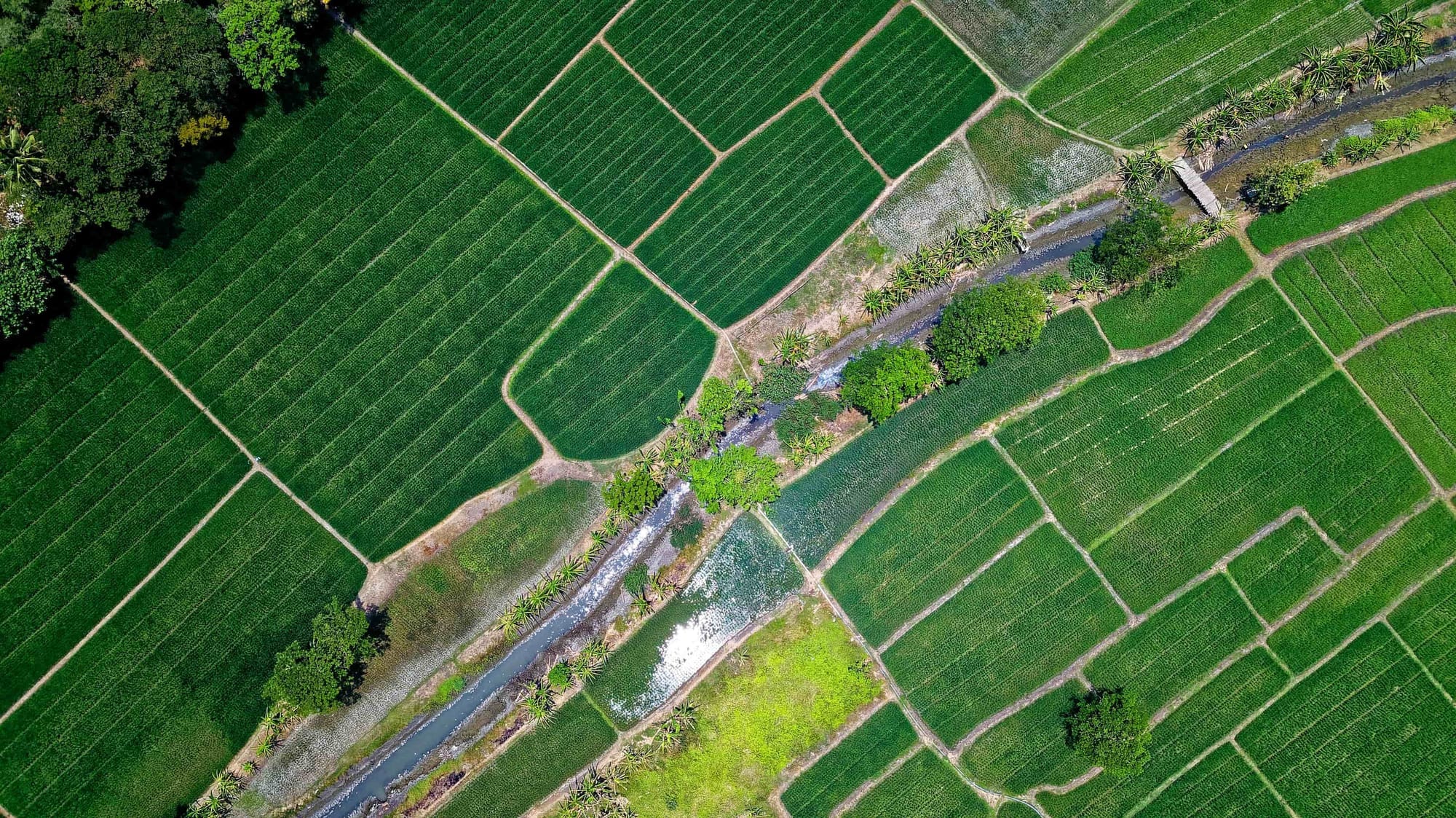
Regenerative agriculture offers a multitude of benefits, making it a compelling solution for sustainable farming practices.
Enhanced Soil Health: One of the primary advantages of regenerative agriculture is its ability to enhance soil health. By implementing practices such as cover cropping, crop rotation, and minimal tillage, regenerative farmers promote soil fertility, water retention, and nutrient cycling. These practices contribute to the development of healthy, nutrient-rich soil that supports robust plant growth. As a result, farmers can achieve higher yields while reducing their reliance on synthetic fertilizers and pesticides, ultimately leading to improved agricultural productivity and profitability.
Biodiversity Conservation: Regenerative agriculture prioritizes biodiversity conservation by creating habitats that support a wide range of beneficial insects, birds, and microorganisms. Unlike conventional farming methods that often rely on monoculture crops and chemical inputs, regenerative practices encourage the integration of diverse crops and the preservation of natural habitats on farms. This promotes ecological balance and resilience, as diverse ecosystems are better equipped to withstand environmental stressors such as pests, diseases, and extreme weather events. Additionally, biodiversity conservation enhances pollination and natural pest control, reducing the need for synthetic pesticides and promoting overall ecosystem health.
Carbon Sequestration: Perhaps the most significant advantage of regenerative agriculture is its capacity for carbon sequestration. By increasing soil organic matter through practices like cover cropping, rotational grazing, and agroforestry, regenerative farmers effectively capture carbon dioxide from the atmosphere and store it in the soil. This not only helps mitigate climate change by reducing greenhouse gas emissions but also improves soil fertility and water retention. As a result, regenerative agriculture serves as a powerful tool for combating climate change while simultaneously enhancing agricultural sustainability.
The Challenges of Adoption
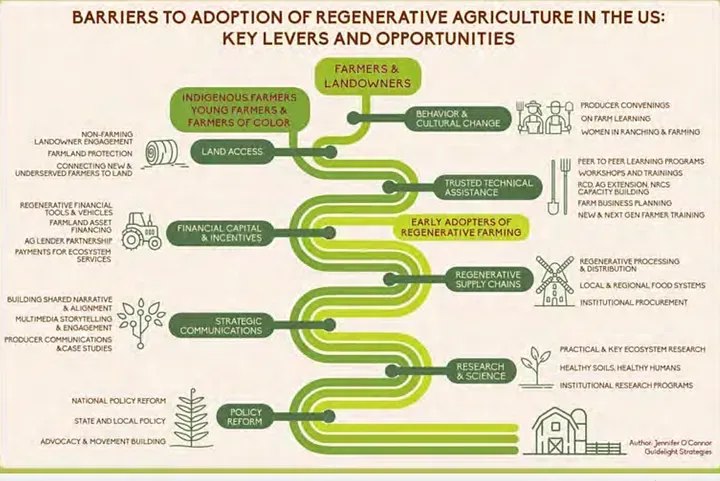
Infographic 1: Barriers faced by US agriculture sector in adoption of Regenerative Agriculture
Awareness: A significant hurdle to the widespread adoption of regenerative agriculture is the lack of awareness among farmers, policymakers, and consumers. Many individuals within the agricultural community may be unfamiliar with regenerative practices and their benefits. Education and outreach efforts are essential to raise awareness and promote understanding of regenerative agriculture's potential to enhance soil health, biodiversity, and resilience to climate change. This includes providing farmers with access to information, training programs, and demonstrations of regenerative techniques to showcase their effectiveness in real-world settings.
Resource Access: Small-scale farmers, in particular, face barriers to adopting regenerative practices due to limited access to financial resources, technical assistance, and inputs. Transitioning to regenerative agriculture may require upfront investments in infrastructure, equipment, and training, which can be prohibitive for farmers with limited capital. To address this challenge, governments, NGOs, and the private sector must provide financial incentives, technical support, and access to resources such as seeds, compost, and equipment. Collaborative initiatives and funding programs can help farmers overcome these barriers and facilitate the adoption of regenerative practices.
Policy Support: Supportive policies and regulatory frameworks are crucial for creating an enabling environment for regenerative agriculture. Governments play a critical role in incentivizing sustainable practices, providing funding for research and extension services, and establishing standards and certification schemes to ensure the integrity of regenerative products. Policymakers should integrate regenerative agriculture into agricultural policies, conservation programs, and climate action plans to promote its adoption at the national and international levels. By creating a supportive policy environment, governments can encourage farmers to transition to regenerative practices and accelerate the shift towards more sustainable agricultural systems.
Regenerative Agriculture: Ensuring Food Security

In the quest for sustainable food systems, regenerative agriculture has emerged as a beacon of hope. While conventional farming practices often degrade soil health and compromise long-term food security, regenerative agriculture offers a holistic approach to farming that restores ecosystems and enhances resilience. This section explores how regenerative agriculture plays a crucial role in ensuring food security by revitalizing soil health, promoting biodiversity, optimizing water management, and building climate resilience.
Enhancing Soil Health: At the heart of regenerative agriculture lies the principle of soil health improvement. By implementing practices like cover cropping, crop rotation, and minimal soil disturbance, farmers can revitalize soil ecosystems, increase fertility, and enhance nutrient cycling. Healthy soils not only support sustainable crop production but also act as a carbon sink, mitigating climate change and reducing greenhouse gas emissions. Through regenerative practices, farmers can maintain soil health for future generations, ensuring the long-term viability of food production.
Promoting Biodiversity: Biodiversity is essential for resilient food systems, yet conventional agriculture often leads to its decline. Regenerative agriculture emphasizes the integration of diverse crops, the preservation of natural habitats, and the promotion of beneficial insects and pollinators. By fostering biodiversity on farms, farmers can enhance natural pest control, improve soil fertility, and increase ecosystem resilience. This diversity not only safeguards food production but also contributes to the overall health of agricultural ecosystems.
Optimizing Water Management: Water scarcity poses a significant threat to food security, especially in regions prone to drought and water stress. Regenerative agriculture employs techniques like rainwater harvesting, contour plowing, and precision irrigation to optimize water use and reduce runoff. By conserving water resources and preventing soil erosion, farmers can ensure the availability of water for crop production while minimizing environmental degradation. Through sustainable water management practices, regenerative agriculture contributes to resilient food systems that can withstand the challenges of a changing climate.
Building Climate Resilience: Climate change presents unprecedented challenges to global food systems, including extreme weather events, shifting precipitation patterns, and rising temperatures. Regenerative agriculture offers a pathway to climate resilience by sequestering carbon in soils and vegetation, mitigating greenhouse gas emissions, and enhancing the adaptability of farming systems. Practices like agroforestry, agroecology, and holistic grazing not only capture carbon but also provide natural buffers against climate extremes. By building climate-resilient farming systems, regenerative agriculture ensures the continued production of food in the face of climate uncertainty.
Regenerative agriculture holds immense promise for ensuring food security in a changing world. By prioritizing soil health, promoting biodiversity, optimizing water management, and building climate resilience, regenerative practices offer a sustainable path forward for agriculture. However, achieving widespread adoption of regenerative agriculture requires collaborative efforts, supportive policies, and increased investment.
Exploring Unilever's Regenerative Agriculture Initiatives: A Case Study
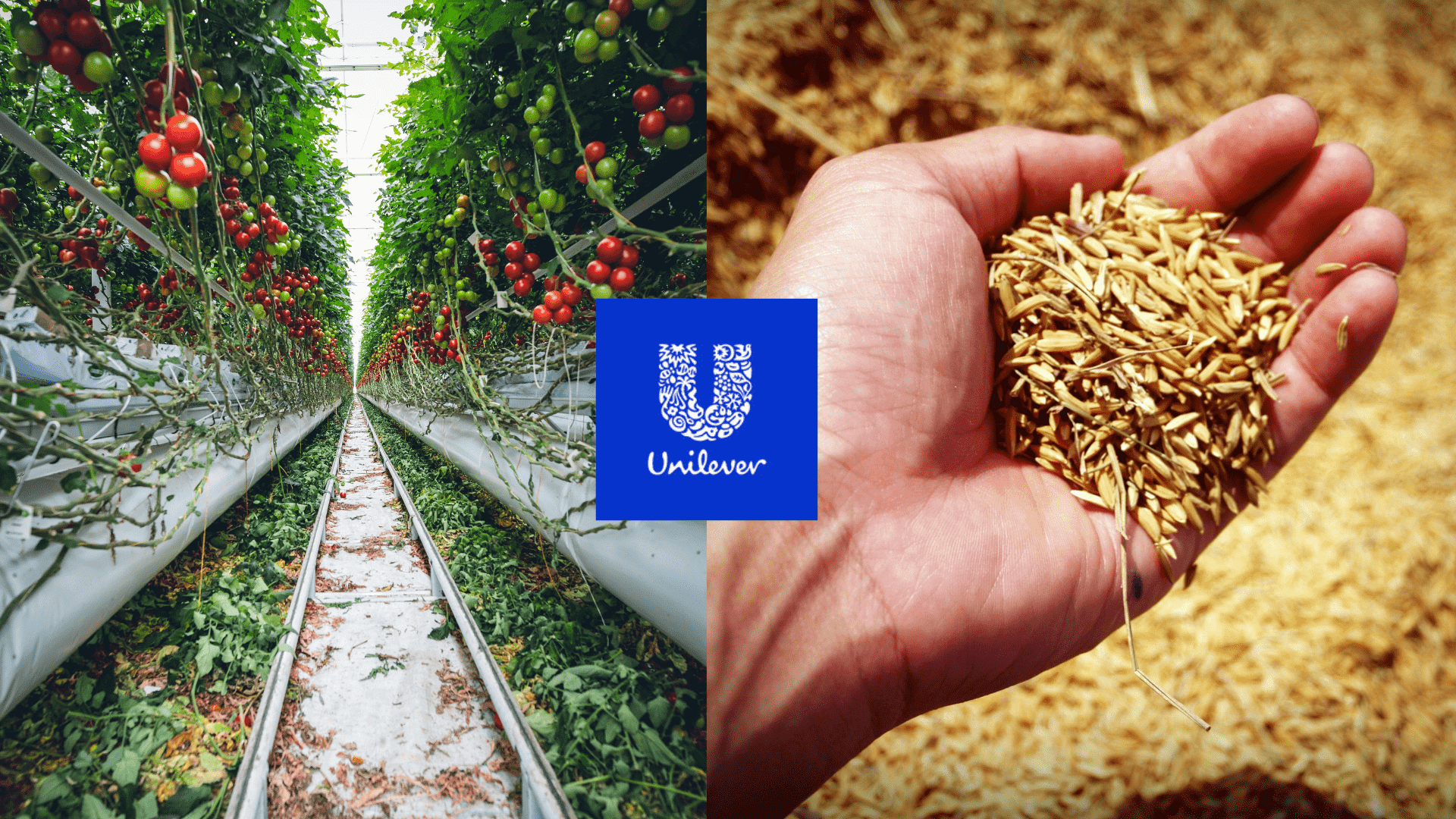
Unilever's commitment to regenerative agriculture is exemplified through its impactful projects, showcasing tangible benefits such as reduced greenhouse gas emissions, enhanced biodiversity, and improved soil health.
Tomatoes in Badajoz, Spain: In the region of Badajoz, Spain, Unilever partnered with local tomato suppliers to implement precision irrigation systems and introduce wildflower borders on farms. These innovative practices aimed to mitigate the environmental impact of tomato cultivation while promoting ecosystem health. The results were remarkable: greenhouse gas emissions were reduced by an impressive 37%, indicating a significant reduction in the carbon footprint of tomato production. Furthermore, the introduction of wildflower borders led to a remarkable 173% increase in pollinator populations. This not only enhanced biodiversity but also contributed to the overall resilience of the farming ecosystem by promoting natural pest control and pollination services.
Rice in Arkansas, US: In the rice-growing region of Arkansas, Unilever collaborated with rice farmers and the University of Arkansas to implement regenerative practices tailored to the local context. By adopting techniques such as furrow irrigation and wetting and drying, rice farmers were able to significantly reduce methane emissions by an impressive 76%. Methane, a potent greenhouse gas, is emitted during flooded rice cultivation, making it a major contributor to agricultural emissions. Additionally, the project resulted in a notable 48% decrease in overall greenhouse gas emissions from rice cultivation. These results demonstrate the potential of regenerative agriculture to mitigate climate change while maintaining agricultural productivity.
In summary, Unilever's initiatives in Badajoz, Spain, and Arkansas, US, highlight the transformative impact of regenerative agriculture on greenhouse gas emissions, biodiversity conservation, and soil health. By implementing innovative practices and fostering collaboration across the agricultural value chain, Unilever is driving positive change towards more sustainable and resilient food systems.
Conclusion: Navigating the Path Ahead
Regenerative agriculture stands poised at the forefront of sustainable farming practices, offering a holistic approach to address pressing environmental concerns while ensuring food security for generations to come. As we navigate the path ahead, several key considerations emerge:
Collaborative Partnerships: Continued collaboration among stakeholders, including farmers, policymakers, corporations, and civil society, will be essential to drive the widespread adoption of regenerative agriculture. By working together, we can leverage collective expertise and resources to overcome barriers and scale up regenerative practices globally.
Policy Support: Governments play a pivotal role in creating an enabling policy environment that incentivizes regenerative agriculture and supports farmers in making the transition. Policy frameworks should prioritize sustainable farming practices, provide financial incentives, and facilitate access to resources and technical assistance.
Education and Outreach: Raising awareness and promoting understanding of regenerative agriculture's benefits are critical to its adoption. Education and outreach efforts should target farmers, consumers, and policymakers, highlighting the economic, environmental, and social advantages of regenerative practices.
Investment in Research and Innovation: Continued investment in research and innovation will drive advancements in regenerative agriculture, allowing for the development of new techniques, tools, and technologies to enhance soil health, biodiversity, and resilience to climate change.
Market Transformation: Consumer demand for sustainably produced food products can drive market transformation and incentivize businesses to adopt regenerative agriculture practices throughout their supply chains. By supporting regenerative products and initiatives, consumers can play a pivotal role in shaping more sustainable food systems.
As we look to the future, regenerative agriculture offers a promising pathway towards building resilient, equitable, and thriving food systems that nourish both people and the planet. Through collective action and unwavering commitment, we can harness the power of regenerative agriculture to create a more sustainable and resilient future for all.


